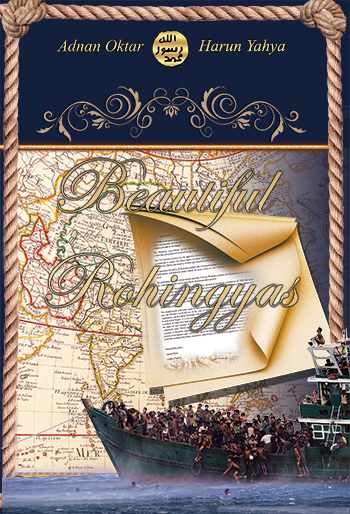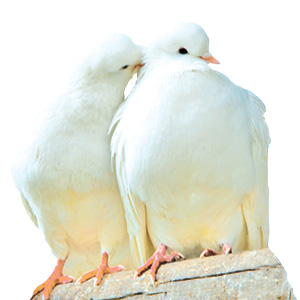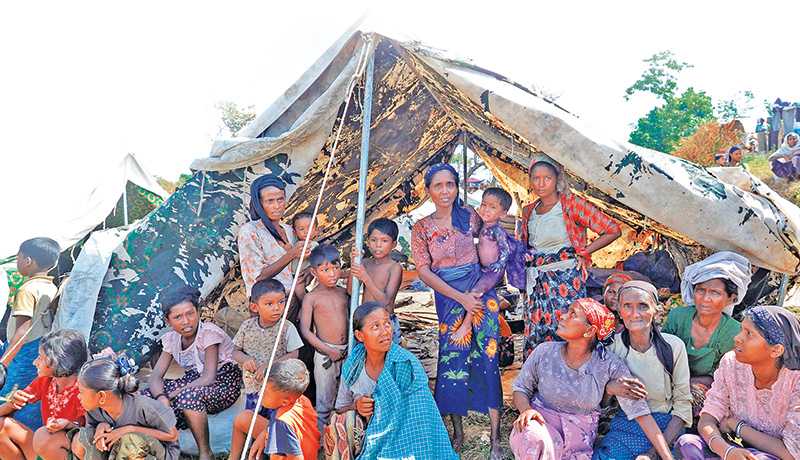Bigotry: The Dark Danger
Beautiful Rohingyas

DOWNLOAD THE BOOK
CHAPTERS OF THE BOOK
- Introduction - When the Migration Wave Starts to Wash Ashore
- Chapter 01 - Open Letter to the Burmese (Myanmar) Administration
- Chapter 02 - Events in Myanmar Are Crime Against Humanity
- Chapter 03 - A Cry for Help to the U.N. from Rohingya of Myanmar
- Chapter 04 - Behind the Persecution in Myanmar
- Chapter 05 - Myanmar Should Beware of Radicalism
- Chapter 06 - Deafening Silence over Rohingya Issue
- Chapter 07 - Rohingya People Ignored by Myanmar Government
- Chapter 08 - Why Does the World Turn a Blind Eye on Children's Cries Coming from a Far Corner in Southeast Asia?
- Chapter 09 - Are the Rohingyas Doomed to Remain Stateless?
- Chapter 10 - The Rohingya Muslims Are Being Exiled in Their Own Lands
- Chapter 11 - Differences Can Become Richness
- Chapter 12 - What If You Didn't Have Even an Inch of Land to Live on in This World?
- Chapter 13 - Not the Rohingya Crisis, but a Crisis of Humanity
- Chapter 14 - Are the People of Rakhine Condemned to Be Oppressed in the Countries to Which They Flee?
- Chapter 15 - Being a Muslim Woman in Myanmar
- Chapter 16 - How Does It Feel to Be a Rohingya?
- Chapter 17 - Small Steps That Could Make a Big Difference
- Chapter 18 - The Only Solution to the Refugee Crisis That Shook the World
- Chapter 19 - Rohingyas' Uncertain Fate Post-Polls
- Chapter 20 - Time for Global Community to Step up for Myanmar's Muslims
- Chapter 21 - Humans Have Rights on Paper, but Apparently Not in Real Life
- Chapter 22 - The Forgotten Rohingya
- Conclusion - Unity among Muslims Is the Most Vital Issue
< <
11 / total: 24
Chapter 10 - The Rohingya Muslims Are Being Exiled in Their Own LandsThis article was published on Burma Times on March 20th, 2015
The Rohingya Muslims have lived in a region including Rakhine in Myanmar for hundreds of years, and history shows these lands belong to them. Yet these innocent people are being maltreated in their own lands, exiled and persecuted using the most barbaric methods. This is genocide, one that the world is ignoring. But it is impossible not to see this crime against humanity being committed with ever more horrifying means, because access to information is today a simple matter, and the Internet is a university all by itself. It is therefore not at all difficult to obtain information about the history of the Rohingya Muslims in Myanmar and the persecution they are facing in those lands. Islam first came to Rakhine [formerly Arakan], part of the Far East and inside the borders of Burma through Muslim travelers to the region in the 8th century. When Bengal adopted Islam in 1203, Arakan came under Muslim rule. Between 1430, when the region was conquered by Muslims, and 1638, with a few exceptions, the rulers generally chose to live by Islam. The Muslims settled in Arakan are therefore the descendants of Sulayman Shah, who was placed on the throne by the Bengali Sultan Jalaluddin Muhammed Shah.1 The rightful owner of Arakanese land is Rohingya MuslimsHistory confirms that the Rohingya Muslims who are now being persecuted in their own lands, whose homes and villages are being burned, whose mothers and daughters are being tortured and whose men are being slaughtered, are the rightful owners of that territory. In addition, Muslims have occupied important positions in the governing of the country and in its political and cultural life for more than 350 years. They have even provided such senior officials as five viziers, along with governors, army generals and ministers. However, following the killing of the Muslim Sultan Shah Salim II in a conspiracy in 1638, the empire entered a period of decline and collapse. With its invasion by Burma in 1784, the Muslim people living in the region suffered great oppression. Many of them were forced to flee to Bengal, which was under British rule. According to East India Company records, in 1799 35,000 Arakanese Muslims fled their lands because of persecution by the Burmese. The records tell us this; "…in one day soon after the conquest of Arakan the Burmans put 40,000 men to death: that wherever they found a pretty woman, they took her after killing the husband; and the young girls they took without any consideration of their parents, and thus deprived these poor people of the property…"2
The Muslim population in Rakhine is being annihilated step by stepAfter the withdrawal of the British who had been in control of the region, in 1824, there was soon a considerable increase in the number of attacks on Muslims. During the Second World War and the Japanese occupation the pressure on Muslims increased still further, culminating in Muslim men, women and children being barbarically murdered by swords and spears in the village of Chanbilli in the township of Minbya in 1942. After the slaughter the district was pillaged. All gold, silver and valuable items belonging to Muslims were seized, and their animals were confiscated. In the attacks that started in this village and spread across Rakhine, 307 Muslim villages were wiped off the map, more than 100,000 Muslims were martyred and some 80,000 were driven from their homes.3 Restrictions on the movements of Muslims were imposed following Burmese independence in 1948, the aim being to eliminate the Muslim population of Rakhine entirely. A military regime that took power following a coup in 1962 entirely rejected the identity of the Muslim people and began using propaganda to depict them as foreigners. They were removed from their posts in the police and the civil service and were prohibited from moving freely in the province of Rakhine.
Muslims, to whom Rakhine actually belongs, have been living under very harsh conditions again since 1990. There has been systematic pressure intended to reduce the population. They are unable to engage in agriculture or raise livestock because of arbitrary local taxation. Their lands are being taken into public ownership. Other examples of the persecution of Muslims include arrests, torture, the destruction of mosques and cemeteries, Muslim girls being taken away from their village under the pretext of 'development of the status of women,' and their being deprived of their rights to education.4 The Rohingya Muslims have been forced from their own lands, their true homeland to migrate to other countries in search of safety. The people to whom these lands really belong are today abandoning their roots, culture and history and struggling to survive under harsh conditions as refugees in other countries. More than 240,000 Muslims in Burma are living as refugees inside the country, and citizenship rights are denied to more than 810,000 Muslims living in the country. There are 120,000 refugees on the border with Thailand.5 There are also Rohingya Muslims with refugee status in Pakistan, Saudi Arabia, Malaysia, Thailand, Bangladesh and some European countries. One and a half million Rohingya Muslims are living at the hunger threshold in Bangladesh alone, trying to survive in the jungles and valley margins. The entire world is silent in the face of this crime against humanity which they are aware of through the Internet and read about in the newspapers or see on the television almost every day. Crimes against humanity and attacks attract fierce reactions when they happened in developed countries in the Western hemisphere, but the plight of the Rohingya Muslims fails to have the same effect. People do not care about these valuable but suffering people far away from their own region, who do not adopt the modern Western way of life and whom they perhaps regard as second class due to ethnic differences under the influence of the materialist worldview. However, every person whose conscience and heart are not totally atrophied, wherever in the world they may be, has a responsibility to defend the rights of these innocent people, to maintain justice and to strive to eliminate wickedness. We should not forget that a sentence appearing in the social media, an article shared, a word spoken at a meeting or making people aware of this blatant persecution is vital. Indeed every step taken for the sake of unity of public opinion against tyrannical regimes and evil people will constitute a barrier against such crimes against humanity and help prevent their reoccurrence.
Footnotes1. Dünden Bugüne Arakan [Arakan From Yesterday to Today], Dr. Muhammed Yunus, 2012, http://www.ihh.org.tr/fotograf/yayinlar/dokumanlar/dunden-bugune-arakan.pdf 2. SOAS Bulletin of Burma Research, (Buchanan 1992:82), https://www.soas.ac.uk/sbbr/editions/file64388.pdf 3. Rakhine Rohingya National Organization, the 1942 Muslim massacre, http://www.rohingya.org/portal/index.php/rohingya-library/26-rohingya-history/55-the-muslim-massacre-of-1942.html 4. A Handbook of Terrorism and Insurgency in Southeast Asia, s. 330-340, https://books.google.com.tr/books?id=ZzMmpCinBYoC 5. UN High Commission for Refugees, UNHCR, http://www.unhcr.org/pages/49e4877d6.html |
11 / total 24
You can read Harun Yahya's book Beautiful Rohingyas online, share it on social networks such as Facebook and Twitter, download it to your computer, use it in your homework and theses, and publish, copy or reproduce it on your own web sites or blogs without paying any copyright fee, so long as you acknowledge this site as the reference.


